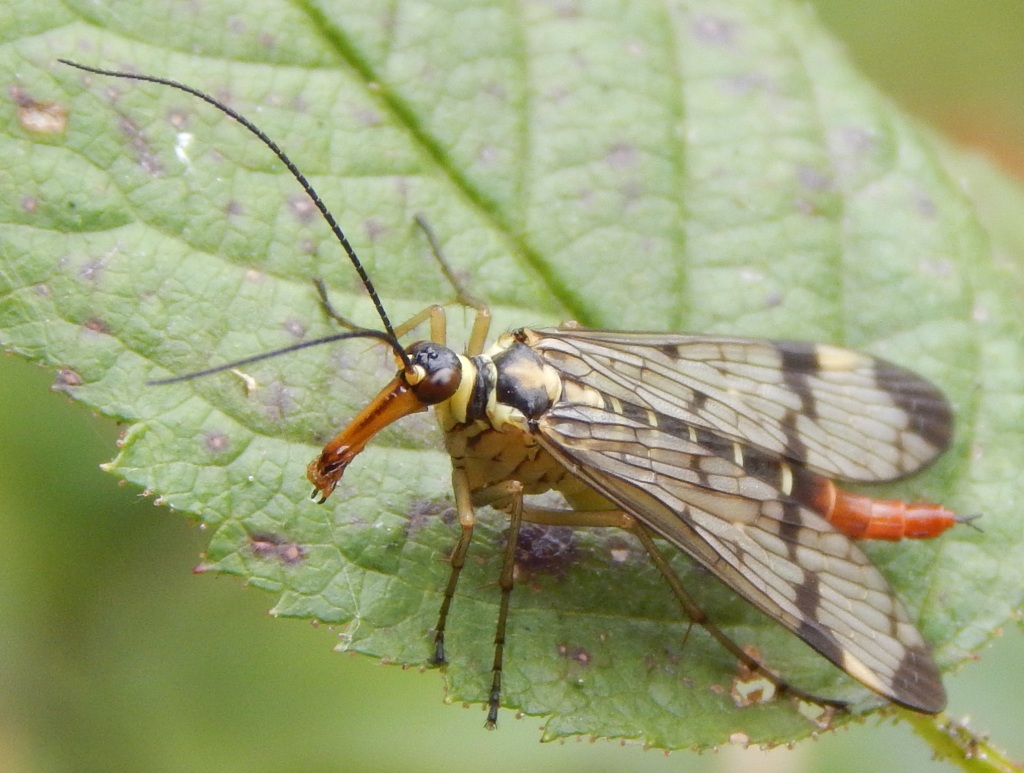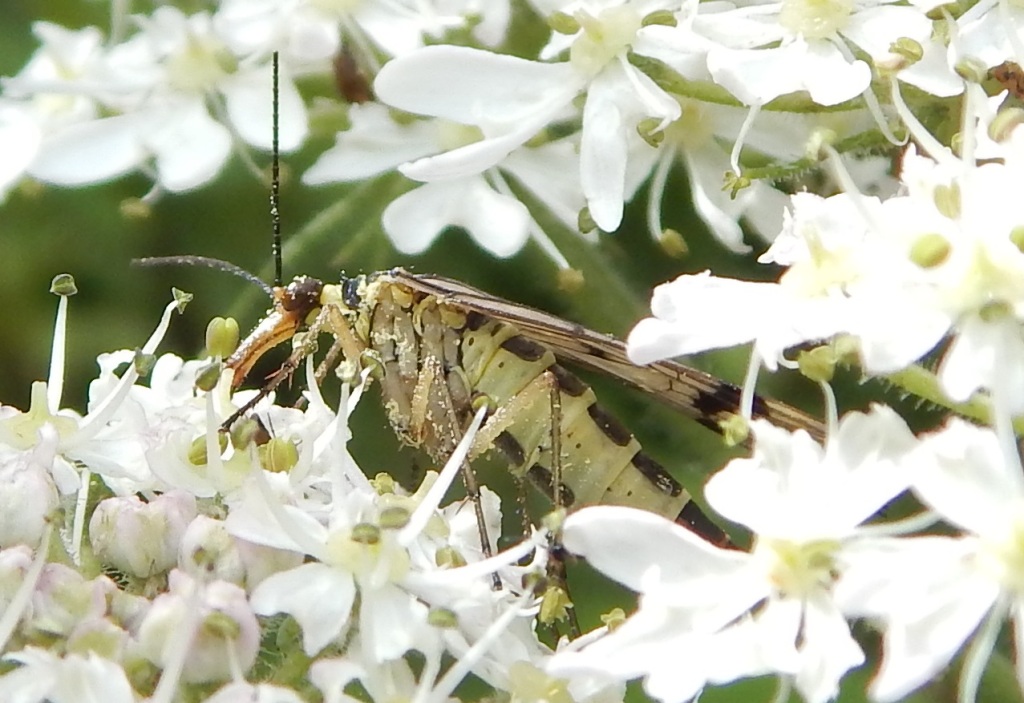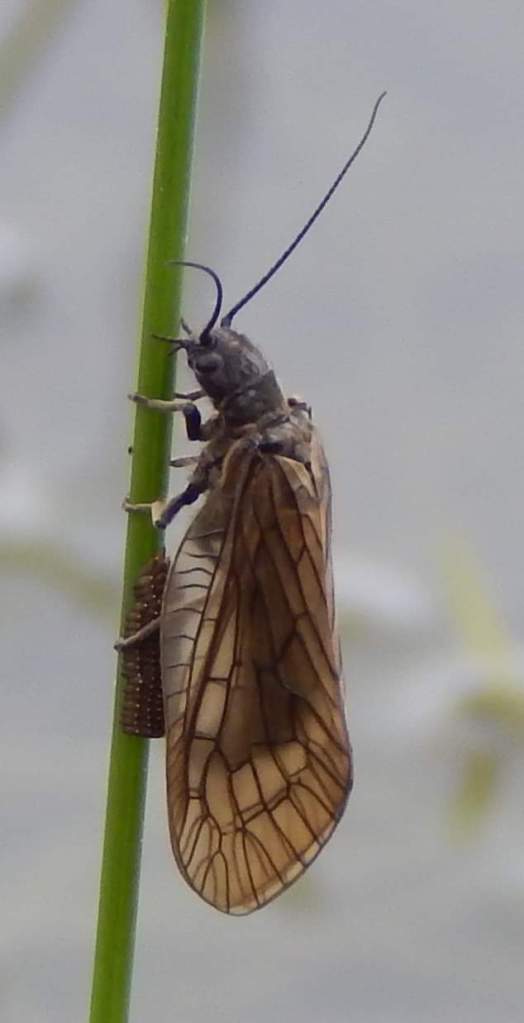
[247] Panorpa communis, (Common) Scorpionfly
Introduction
Panorpa communis is a species of Scorpionfly, generally called the Common Scorpionfly, but it is indistinguishable from the two other British species Panorpa germanica and Panorpa cognata without microscopic examination.
It should not be called a Scorpion Fly because it is neither a scorpion nor a fly. Scorpionflies have their own order and this blog will also look at other less well-known orders.
Taxonomy
Kingdom – Animalia
Phylum – Arthropods
Class – Insects
Order – Mecoptera (Scorpionflies)
Family – Panorpidae (Scorpionflies)
Genus – Panorpa
Scientific Name – Panorpa species
The exact species it not normally possible to identify.
Name
The similarity with scorpions is obvious for the male.
New Latin Panorpa comes from Ancient Greek roots pan-horpe meaning all-sickle. Communis is a Latin word meaning common, although the Latin vulgaris is much more often used as a species epithet to mean the same thing.
Mecoptera, from Greek, means long-wings.
Description
There are only about six hundred species within the order Mecoptera of which about half are Panorpa species.
(We can compare this with about a million types of Diptera; half a million Coleoptera; 200 000 Lepidoptera and 100 000 Hymenoptera.)
Scorpionflies have long tube-like mouthparts, long wings and elongated bodies. the female abdomen ends in a pointed structure but the male has a curved tail with genitalia that give it the look of a scorpion.
Panorpa communis is quite a large insect, about three centimetres long. The female has a long body that is pale yellow and black with a pattern of stripes along the back. The tail is dark red. Its wings are mostly clear with dark spots and its mouth is long and downwards pointing.





The male genitalia at the end of an upturned abdomen looks similar to the sting of a scorpion.


The three British Panorpa species feed mostly on dead insects and other dead flesh. Larval forms also feed on dead insects.
Habitat and use
Panorpa communis is native to Europe and Northern Asia. Panorpa cognata and Panorpa germanica are found over much of Europe.
In America the very similar Panorpa nuptialis, also called a Common Scorpionfly, is used in forensic entomology as they are usually the first insects to arrive on a dead body, where they may stay for just over a day. Their presence indicated that the body is only recently deceased.
Other Notes
I have seen these insects on several occasions on leaves and flowers. I will not attempt to distinguish the three species.
See also
While most insects are included in the four main orders, there are several other orders with relatively small numbers of species. You may see an earwig (Dermaptera) or lacewing (Neuroptera) but you are unlikely to see termites, stick insects or mantises in Britain. Here are two more orders that you may possibly spot.
Caddisflies
There are about 15 000 species within the order Trichoptera. (Trichoptera, from Greek roots means hair-wing. Caddis may date from Seventeenth Century English but its origin is unknown.)
The larval stages live underwater and the adults, looking fairly similar to moths, generally live for just a few hours without feeding.

Two hundred species have been seen in Britain and I won’t attempt to give a species identification. You generally have to start by counting the number of tiny spurs on each leg – the front, middle and rear legs will be different.
They can look a bit like moths with long antennae and are seen sometimes by the large community of moth-trappers.
Alderflies
The Order Megaloptera includes Alderflies and a few species of Dobson flies and fishflies. Most of about sixty species of Alderfly come within the genus Sialis.
Their life-cycle is similar to caddisflies with the larval stage living underwater and in mud. The adults may fly for a few weeks.

This one, at the water’s edge, was depositing her eggs on reeds.
